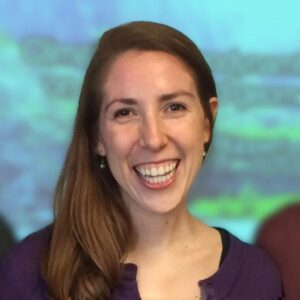Finding a niche in scientific research can be challenging, especially with interests as wide-ranging as those that eventually led Dr. Kimberly Huppert to City College.

Dr. Kimberly Huppert. Photo: CCNY
One of many women leading ground-breaking research at City we spoke with for this Women’s History Month issue, Huppert is deeply involved in the Earth and Atmospheric Science Department’s explorations of Earth and its intricate systems.
Here she enjoys solving problems in Earth science, where she utilizes many of the same applications as civil engineering, one of her prior interests, but with a broader scope.
“I just fell in love,” Huppert told The RICC. “I kind of liked the broader range of approaches, diversity of problems and the freedom to ask different questions in earth science.”
Many of Huppert’s ongoing research projects began prior to her joining CCNY in fall 2022. Before City, she spent five years in Potsdam, Germany as the senior research scientist of Earth surface process modeling at the German Research Centre for Geoscience.
Her work focused on geomorphology, the study of landforms and their evolution. The research often involves piecing together clues from a site — like the rates and processes of erosion and landscape change — to get a clearer picture of the way climate and tectonic regimes have shifted over time, and what caused those shifts.
Much of the research is in the field in places like the Orkney Islands of Scotland, where she worked with a team to install seismometers to measure the extent to which waves shook and altered sea cliffs along the North Atlantic.
“We were installing seismometers, the same instruments that measure earthquakes,” she told The RICC. “But these were just to measure the cliffs shaking when they’re impacted by waves, which we think actually causes the rocks to crack, progressively and slowly, which primes them to be eroded.”
While she cites the potential of visiting new places to do research as one motivation for entering this field, Huppert says the majority of her studies of regions are computational and can be done from afar.
It’s especially so when the extensive field measurements she requires — from specific sediment samples to high-resolution topographic cross-sections of rivers and valleys — are more readily available than in less-studied regions. The highly studied European Alps are one example.
“There are lots of glaciologists and geologists who live right in the foothills, so we’re kind of taking advantage of that access and existing body of knowledge,” Huppert said.
In addition to her research, Huppert teaches geographic information systems, an active class where students analyze geospatial data, use QGIS open-source software and construct maps.
“It’s very hands-on, and I get students from all different departments and programs; undergraduates and masters students, PhD students this year as well,” she said. “It’s a really fun class.”
As she continues her research, Huppert said CCNY students’ passion for exploring problems with real-world impacts on people, especially those accelerated by climate change, has been a major inspiration.
“I just think CUNY is such a cool system,” she said. “The mission of the program and the opportunity to work in a place like New York City, with such amazing students and faculty and links across all these campuses focusing on such diverse and societally relevant topics — it’s exciting.”
Judah is a senior at CUNY Baruch College, pursuing a major in journalism and minors in computer science and environmental sustainability. He is also the business editor for Baruch’s independent student newspaper, The Ticker, and co-managing editor for the Baruch Journalism Department’s magazine Dollars & Sense.